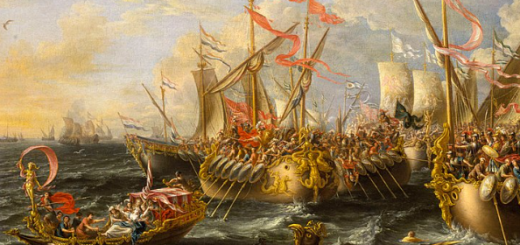Ancient Rome – History, Achievements and Facts
Growing from a small town into an empire, Ancient Rome was one of the most powerful and influential civilizations the world has ever known. This legendary city developed from a relatively small settlement located on central Italy’s Tiber River into a huge empire and now the capital city of present-day Italy. Let us delve straight into all the facts and historical information surrounding ancient Rome.
Who Founded Rome?
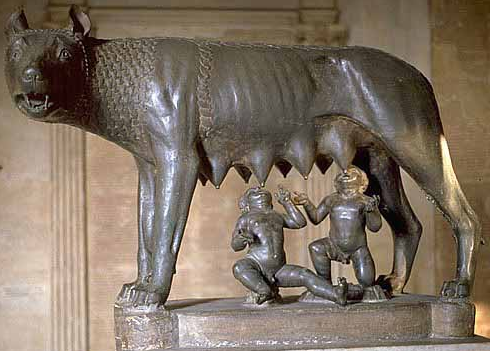
According to legend, twin brothers Remus and Romulus founded the ancient city of Rome. The twins were also believed to be the sons of Ares, the Greek god of war.
According to legend, ancient Rome was founded in 753 BC by twin siblings – Remus and Romulus who were the sons of Mars (he was believed to be the Roman god of war). The twin brothers at the time of their birth were condemned to death by Amulius, the cruel brother of their paternal grandfather (thus, from their mother Rhea Silvia’s father).
Amulius overthrew his brother (father of Rhea Silva) and succeeded him as the King of Alba Longa. An order from King Amulius instructed that the then baby twins be thrown into the Tiber River and allowed to drown. Fortunately for two, they did not drown; instead, they were rescued by a she-wolf named Lepa. She nurtured them in her lair, located at Palatine Hill.
In another account of the story, some say that a shepherd and his wife chanced upon the helpless twins and then adopted them. Remus and Romulus grew up to become very brave warriors. They returned to their kingdom (Alba Longa) to fight and defeat King Amulius. They reinstated their grandfather, Nimator, back as king and set off to establish their own kingdom. A new city was formed along the Palatine hill where Romulus identified as suitable to form a new kingdom.
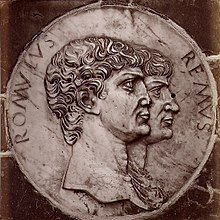
Founders of Rome | Image: Romulus and his twin brother Remus from a 15th-century frieze, Certosa di Pavia
Who was the First King of Rome?
After the new city was established, an argument led to Romulus killing his twin brother Remus. Thus, Romulus became the first-ever king of this newly formed city. He named the city Rome, which was after himself. Romulus then formed a senate as an advisory committee to the king. The senate also assisted with the governance of the newly formed city.
How did the Settlement of Ancient Rome Begin?
After establishing the city of Rome, King Romulus invited people from all walks of life to come and settle in the city. Many men, but very few women, ventured to the new city. This led to a wide gender imbalance. In his bid to rapidly grow Rome and reduce the gender gap, Romulus abducted women from Sabine as wives for the men who lived in his newly found kingdom. This act did not please the then-ruler of Sabine, King Titus Tatius. In Titus annoyance, he launched an attack on Rome. His attack led to a power-sharing agreement between the two kings, Romulus and Titus.
Subsequent Kings of Ancient Rome
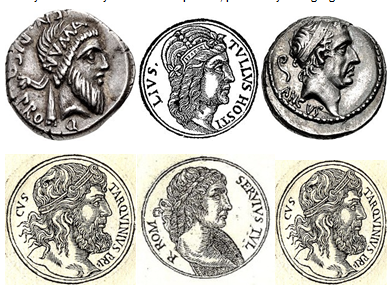
The Six Kings of Rome that came after Romulus | Image (from top left to bottom right): Numa Pompilius, Tullus Hostilius, Ancus Marcius, Tarquinius Priscus, Servius Tullius, and Lucius Tarquinius Superbus
After Romulus, several other kings succeeded him. Lucius Tarquinius Superbus was the seventh and last king of the Roman Monarchy. He was portrayed as an unkind and also a violent king as compared to his generous predecessors. After the death of Tarquinius Superbus, the Roman Republic was proclaimed.
Below are the successive kings of ancient Rome that reigned after the death of King Romulus:
-
Numa Pompilius (reigned c. 715 – c. 673 BC)
-
Tullus Hostilius (reigned c. 673 – 642 BC)
-
Ancus Marcius (reigned c. 677–617 BC)
-
Tarquinius Priscus (reigned c. 616 – 579 BC)
-
Servius Tullius (reigned c. 578 – 535 BC)
-
Lucius Tarquinius Superbus (reigned c. 535 – 509 BC)
When did the Roman Republic Start?

The Commencement of the First Roman Republic after the overthrow of the Roman Monarchy around 509 BC. | Image: Roman Denarius of 54 BC, showing the first Roman consul, Lucius Junius Brutus, flanked by two lictors and preceded by an accensus
After the overthrow of the King Tarquinius, the last king of the Roman Monarchy, a new government was created in 509 BC. The new administration was formed without a king and it was referred to as the Roman Republic.
Lucius Junius Brutus (died in c. 509) is recognized as the Roman who founded the Roman Republic by overthrowing the last king of Rome. He is revered as one of the first consuls of the Roman Republic. His uncle was the roman king Tarquinius Superbus. Lucius Junius eliminated anyone who tried to restore the Roman monarchy. Some of the people he executed included his own sons, who schemed to bring back the expelled allies of Roman king Tarquinius Superbus.
Under the Roman Republic, Rome saw a new system of governance, with the city governed by yearly elected consuls. Under this newly found method of governance, the Roman State experienced massive expansion and it became one of the greatest civilizations in the history of this world.

Roman consul Lucius Junius Brutus overthrew Roman king Tarquinius Superbus in 509 BC. Portrait of the Founder of the Roman Republic Lucius Junius Brutus on a denarius minted by Marcus Junius Brutus in 54 BC
The Attack on Rome – the Roman City is Set Ablaze
After enjoying a decent run of progress and prosperity as a Republic, the city of Rome was hit by a brutal and unpalatable event. In 390 BC the Gauls launched an attack on the Roman city. The Roman army, unprepared and unaware, was defeated by the Gallic army, which was led by Brennus. A large number of Romans (thus civilians and some army personnel) fled the city for their lives. The Gauls had the city all to themselves – they looted and set fire to properties.
Ancient Rome Fights Back and Restores its Freedom
The Romans negotiated with the Gauls to offer 450 kg of gold to the Gauls in exchange for their freedom. The offer was accepted by the Gauls, however, upon delivery of the gold, the Romans noticed that the Gauls had manipulated the scale used in weighing the gold, which angered the Romans.
The angry Romans launched an attack on the Gauls and this time around the Gauls were defeated. “With iron, not with gold, Rome buys her freedom” were the famous words of Camillus, the Roman army general who led his warriors to victory.
Rome Gains Control over the Italian Peninsula
After the battle with the Gauls, Rome intensified it defense and gradually conquered several other towns on the Italian peninsula. They conquered the Etruscans as well. They expanded and found Roman colonies in key areas along the Mediterranean as well. This was done in order to strengthen their control on the peninsula.
The Punic Wars (264 – 146 BC)
The Romans continued to defend and expand their territory through several wars. This included the Punic Wars. The Punic Wars were struggles and battles between states or empires for the domination of the Mediterranean region. This mainly resulted in several battles between the two great states (Rome and Carthage) of the Mediterranean.
The 1st Punic War, which lasted for a period of about 20 years, saw Rome come out victorious over its arch enemy Carthage, a North African City. A peace agreement was signed after this battle.
The Second Punic War saw the Romans fight two simultaneous wars. In addition to their Punic battle; the Romans also fought the Macedonian War. Well, as we will expect, the mighty state came out victorious in both battles.
In the 2nd Punic war, Hannibal Barca, who was an army general for Carthage invaded Hispania (an ally to Rome). The battle of the 2nd Punic war also lasted for about 16 years. In this battle, the Romans introduced guerrilla warfare strategy, which weakened the Carthage army completely. This battle ended in a victory for Rome.
It was during the Third Punic War that Carthage was completely destroyed by Rome. In this warfare, the Carthaginians had to fight simultaneous battles as they were already at war with Numidia when Rome declared war on them. This time around the city of Carthage was totally obliterated and Rome took control of the area.

The Punic Wars were a series of wars (between 264 and 146 BC) that were fought between the Roman Republic and Ancient Carthage. The victory in the Punic Wars made Rome even stronger and the city expanded its territories to include other European and North African regions.| Punic Wars – Part of the ruins of Carthage
The Late Roman Republic – The Fall and Rise of Rome
Little did Rome know that their era of great victories and massive expansion will gradually crumble and plunge into an era of chaos and internal struggle. As Rome became more consolidated, the gap between rich and poor Romans continued to widen, unemployment rates became high, and there were increased political power restrictions to only certain classes of people.
Several attempts were made to tackle the social issues that resulted during Rome’s dominance of the Mediterranean. However, such efforts yielded little outcomes. Notable reforms like the Tiberius Gracchus reform movement in 133 BC ended in the reformer being cruelly murdered by offended senators. Another reform ten years later by Gaius Gracchus (the brother of Tiberius Gracchus) also resulted in his death alongside his 3,000 followers.
Gaius Marius
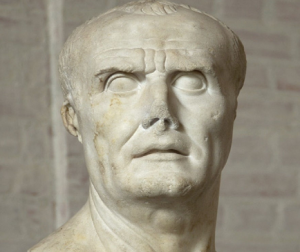
Gaius Marius
Marius was a commoner who found his way up the political ladder in Rome through his exceptional military expertise. He was elected an unprecedented 7 times as a consul, with the first coming in 107 BC. As it was needed at that time, Marius increased the number of army personnel by using an unorthodox means. He enlisted the poor into the army, an act which was initially forbidden. Through such reforms (in the army), Marius gained popularity amongst the poor and his army (who were very loyal to him).
Cornelius Sulla

Cornelius Sulla
Sulla was elected as Consul on two occasions, the first in 88 BC. He gained popularity amongst his legions for being extremely generous to them. He was appointed by the Senate as the leader for the attack on Pontus. However, the Senate later changed their mind and appointed Sulla’s arch-rival Marius, which angered Sulla. In his anger, he attacked Rome and destroyed all the politicians who were behind the appointment of Marius as leader of the Asia Minor attack. Mauris managed to flee Rome, but returned and with his ally Cornelieus Cinna, they overthrew Octavius, who was then consul of Rome. Marius became consul in 86 BC (his 7th consulship), but after a few months he passed away only for Cinna to succeed him. Cinna died in 84 BC.
Sulla was away in Greece during Mauris return to Rome. Upon his (Sulla) return from Greece, he restored his power by seizing control over Rome in 83 BC. Under Sulla’s consulship, political and economic turmoil were still prevalent.
The Era of Julius Caesar – The Formation of the First Triumvirate
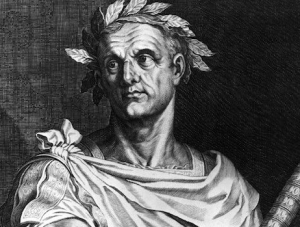
Julius Caesar
Julius Caesar was famous for his defense and expansion of Rome. He joined forces with Pompey (a great military leader in Rome) and Crassus (who was then, the richest man in Rome) to form the First Triumvirate. The First Triumvirate saw massive success for all three, with each of them benefiting significantly from their alliances resulting in Caesar’s appointment as consul and military commander of Gaul. Their alliance made the three men more powerful in Rome, and in effect, they controlled the City.
The First Triumvirate Ends
In 53 BC Crassus died in the Battle of Carrhae, which resulted in the ending of the Triumvirate. Caesar meanwhile returned to Rome after being victorious over Gaul. He became wealthier and gained more respect after his triumph. Caesar’s achievement became a threat to Pompey. In a bid to undermine Caesar, Pompey and his allies made attempts to strip Caesar of his legions.
In 49 BC Caesar marched into Rome upon sensing the threat from Pompey and his allies. His attack on Rome prompted Pompey and his party to flee, with Caesar pursuing them. Pompey fled to Egypt were his was murdered in 48 BC, however not by Caesar, but by Ptolemy XIII of Egypt.
Caesar arrived in Egypt only to learn that his former ally had passed on. He returned to Rome, however, on his way he fought and won a brief battle in the Asia Minor. Caesar, upon his victory, famously said: “Veni, Vidi, Vici,” which means “I came, I saw, I conquered”.
Julius Caesar’s Assassination
Caesar’s rule over Rome increased in meteoric proportions, making him very powerful in the process. He held several dictatorship consulships during his reign. He was assassinated on 15th March 44 BC. Caesar was assassinated by a group that was led by Gaius Cassius and Marcus Junius Brutus (who was his friend).
The Aftermath of Julius Caesar’s Assassination- the Second Triumvirate and Octavian
The death of Julius Caesar led to a lot of political tensions and social chaos in Rome. After Caesar’s death, his friend and former colleague, Mark Anthony took over the affairs of Rome. However, it was quite brief as Caesar’s nephew (who was his adopted heir) Octavian soon returned to Rome. Octavian’s presence in Rome saw the formation of an official Second Triumvirate, which was made up of Octavian, Anthony, and Marcus Aemilius Lepidus.
The formation of the Second Triumvirate resulted in up to 300 senators being executed for their alleged support for Liberatores. At this juncture, the leaders of the Liberatores and Caesar’s assassins were defeated as Octavian triumphed in the battle of Philippi.
The Division of Rome
Under the Second Triumvirate, Rome was divided between the triumvirs. Octavian (later known as Augustus Caesar) remained in Rome and oversaw the control of Gaul and Hispania provinces. Mark Anthony took charge of the Eastern provinces, while Aemilius Lepidus was handed the Northern African province.
The Crumbling of the Second Triumvirate – Struggles amongst the Triumvirs
The Second Triumvirate, which officially was for a five-year period, ended in 38 BC and was renewed for another five years. However, the relationship between the trio was gradually in the decline. To make matters worse was Anthony’s affair with Cleopatra VII, the queen of Ptolemaic in Egypt. Anthony’s affair with a queen of another nation was considered an act of treason and also he was alleged to be living an extremely lavish lifestyle, something the Romans frowned on.
Octavian waged war on Anthony and Cleopatra in 31 BC in the Actium battle. Victory came Octavian’s way and the Ptolemaic, the Egyptian nation was defeated. Angered by the demoralizing defeat, Cleopatra and Anthony could not bear the anguish and therefore they committed suicide. As for Lepidus, he was forced to retire after betraying Octavian. He retired in 36 BC. All these incidents resulted in the crumbling of The Second Triumvirate.
Octavian Assumes full Control of Rome- He Becomes Augustus, the First Roman Emperor
Octavian, already aware of what happened to his Uncle Caesar, he solidified his grip of Rome in 27 BC, restoring the laws of the Roman Republic. However, he retained all the power to himself, thus, making him the sole ruler of the Roman State. He named himself Augustus – meaning exalted.
Augustus reign as the first Emperor of Rome restored peace and stability back to Rome. It was his era that paved the way for the empires famously rich and happy periods which was referred to as Pax Romana or Pax Augusta, which saw prosperity and peace in the region for a period of over two-centuries-long.
Read More: 10 Major Achievements of Augustus, the First Roman Emperor
The Dynasty of Julio-Claudian
Augustus was the first of the Julio-Claudian dynasty. Successive rulers (emperors) in the Julio-Claudian era included; Tiberius, Caligula, Claudius, and Nero. Augustus and Claudius were the two outstanding emperors during the Julio- Claudian reign. They experienced huge success in both military and political aspects. Below is an overview of the dynasty’s emperors:
- Augustus: was the first emperor of Rome. He was focused and very ambitious. His intentions were to expand the Roman Empire all over the world. He re-introduced the 12-month calendar, which was introduced by Caesar; with the month of August named after him (Augustus). His reign lasted for a period between and 14 AD.
- Tiberius: Augustus’ stepson (his wife’s son from another man), Tiberius succeeded Augustus. He often cast a dejected figure and was regarded by many as a cruel man. Tiberius was alleged to have sanctioned the execution of his son. He reigned as emperor between 14 Ad and 37 AD when he died.
- Caligula: After Tiberius death, 24-year-old Caligula (nicknamed “Little Boot”) was the next in the Julio-Claudian dynasty to succeed him. He was also seen as a cruel and highly considered as a mentally unpredictable ruler. Caligula took delight in executing several Roman citizens, of which they developed an extreme dislike for. He was finally executed on 24th January 41 AD.
- Claudius: He was at that time the first Roman Emperor not to be born in Italy. Claudius was born in Gaul. He died on 13th October 54 AD. He began the conquest for Britannia. But unfortunately for Claudius, he was killed on 13th October 54 AD, by his wife, Agrippina the Younger.
- Nero: Nero, the stepson (Agrippina’s son from her former marriage) of Claudius was the next emperor and succeeded his stepdad. Nero was notorious for the prosecution of Christians. He was also noted for being mentally unstable, as he murdered his mother and wife. Nero committed suicide in 68 AD.
The Flavian Dynasty
After the Julio-Claudian era, the second dynasty to rule the Roman Empire was the Flavian dynasty. With the death of Nero, Vespasian, who served as a general under both Nero and Claudius, took charge as the next ruler and emperor of Rome. He, therefore, began the second dynasty, which was known as the Flavian Dynasty.
There was continued growth and expansion under the second dynasty, with Rome maintaining its superiority as an Empire. Emperor Vespasian reconstructed the city, completed uncompleted buildings and also reconstructed structures that were damaged during the great fire of Rome. Vespasian died in 79 AD.
Titus succeeded Vespasian in 79 AD and it was during his reign that the City of Rome experienced a celebration of 100 days for their victory over the Jews. During the celebration period, games like chariot races and gladiator combats were promoted. His leadership ended in 81 AD when he died of fever.
In AD 81, Titus was succeeded by Domitian, his brother. Domitian preferred to be called “Dominus et Deus” which is translated as “Master and God”. His headship lasted for 15 years.
After Emperor Domitian’s death, the heredity method of succession was abolished and Emperors were selected based on their individual qualities. The Senate selected Nerva in 96 AD to succeed Domitian. This period marked another incredible age in Roman history.
After Nerva’s death in 98 AD, the new system of selecting emperors was practiced to effect with Trajan succeeding Nerva in 98 AD.
Trajan’s reign lasted between 98 AD and 117 AD, a period in which he sustained Rome’s progress and peace. He was credited for the massive expansion of the territories of Rome. He was succeeded by Hadrian, who was emperor between 117 AD and 138 AD. Antoninus Pius peacefully took over from Hadrian and ruled from 138 AD to 161 AD.
During Emperor Marcus Aurelius reign, which was from 161 AD to 180 AD was marked by several conflicts. The Germanic tribes attacked Rome during the leadership of Aurelius leaders. Aurelius became ill and handed over the leadership of Rome to Commodus, his 19-year old son. This act by Aurelius broke the newly found system of selecting emperors.
Read More: 10 Greatest Roman Emperors
Rome’s Decline and Political Instability
Commodus’ reign as Emperor was one that had no significant impact on the progress and expansion of the Roman Empire. However, his leadership, as you will predict, from many a teenager- was one that lacked competence. Commodus’ leadership kick-started a period of decadence in Rome. A conspiracy between Commodus’ wife and Quintus Aemilius Laetus led to his death on December 31st 192 AD. Septimius Severus took over the Roman Empire in 193 AD, but he passed on in 211 AD after being ill.
Upon Septimius’s death, his sons, Geta and Caracalla succeeded him and both became co-emperors of Rome. However, Caracalla murdered his younger brother Geta to become the sole emperor of Rome. Caracalla was a cruel emperor as he went on to assassinate many more, including close people around him.
Caracalla was assassinated in 217 AD by Macrinus, whose brief reign lasted less than a year, which ended in 218 AD. Elagabalus became emperor after Macrinus left Rome. Elagabalus extravagant lifestyle and his incompetence meant he was not competent enough to rule Rome. He was assassinated and his cousin Alexander Severus succeeded him.
Read More: Major Causes of the Fall of Rome
The Third Century CE Crises in Rome
After Alexander’s death in 235 AD, the Roman State experienced one of its worst-ever crisis. Several disastrous occurrences overwhelmed the State. The Roman State plunged into political instability and this resulted in many devastating issues, of which included; pandemics, economic depression, and invasions from outside.
Rome’s politically unstable State saw as many as 26 different emperors rule within a short period of 49 years. It was during this period that Rome experienced a very devastating plague- the plague of Cyprian, which broke out in 250 AD killing a chunk of Rome’s population.
To add to Rome’s woes, some of its provinces began to separate from the Roman Empire. The separating provinces formed the Palmyrene Empire and included Asia Minor, Egypt, and Syria Palaestina, which were all provinces formerly controlled by the Roman Empire.
Rome’s Recovery Begins
Rome began to recover under emperor Claudius Gothicus. He was also known as Claudius II. He reigned for only two years, between 268 AD and 270 AD (when he died). In 271 AD Emperor Aurelian took over from Gothicus and battled to win back Rome’s lost provinces. He had victories over Palmyrene and Gallic Empires. His reign ended in 275 AD, the year he passed on.
Emperor Diocletian’s Leadership
It was under Diocletian’s leaders that the Roman State was able to fully overcome major of its crisis. During Diocletian’s reign which would last from 284 AD to 305 AD, The Roman Empire experienced a new system of government. It was known as Tetrarchy. Diocletian divided the State into four major sectors and appointed emperors for each sector.
Diocletian took charge of the East. Maximian controlled the West. Two other junior emperors were also appointed, they were; Galerius and Flavius Constantius for the East and West respectively.
Diocletian made key tax reforms in order to consolidate and adjust the economy. With the assistance of Maximian, Diocletian overpowered several barbarian clans. He persecuted Christians and order that their churches should be destroyed, forbidding any form of Christian worship.
In 305 AD, Diocletian and Maximian became the first-ever emperors to renounce their emperorships.
Constantine’s Emperorship
In 306 AD, Constantine became emperor and assumed the leadership of the now stable Roman Empire. He united the Roman Empire as one he signed the Edict of Milan, which established religious freedom. This act was truly admired by the Roman Christian sects after which gave them the liberty to practice and worship.
Constantine converted to Christianity and thereafter he enforced the Christian religion throughout the entire Roman Empire.

